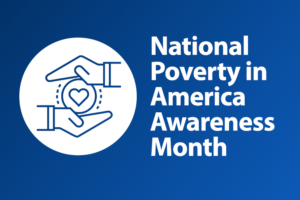Emma Kieran | November 30, 2016
Embracing Change: A Five-Step Process
A former client of mine, let’s call them Emma’s Client, was in desperate need of change. Facing staff and volunteer leadership troubles, financial woes, and an eroding culture of philanthropy, Emma’s Client was at a point of possible closure. It was fighting fires left and right, keeping them from the critical proactive and strategic work of planning for the future. The organization was heavily focused on event fundraising, without the critical post-event relationship building that creates lasting donor relationships. While Emma’s Client was exceeding expectations on program delivery and putting their mission into action, financially the organization was struggling with cash flow and a revenue and expense model that was unsustainable.
From the outside, it was easy to identify a need for change on several levels. Internally, however, the view was a bit foggier. Lack of change was crippling Emma’s Client, but the leadership was unable to step back and see how change could set them on a path toward success, however difficult the work of change might be.
My guess is that you have worked or volunteered for an organization in the same situation as Emma’s Client (or maybe you are reading this from your desk at a similar organization right now). Seeing or knowing that change was necessary isn’t the same as being able to undertake the initiatives that will help address key issues, improve performance, and allow the organization to seize new opportunities.
So what do you do? How do you help an organization embrace change? While not simple, there is a manageable five-step process that will help you manage the change so that it doesn’t manage you.
Step 1: Entry
This step is where you break up with the idea that you can “keep on keepin’ on” and do what you’ve always done while expecting different results. Your organization may never have thought about the need to change, or only fleetingly, but entry is the time to start understanding that status quo is no longer an option. What do you do in this step? One thing: you work with the right folks – staff and volunteer leadership to identify the need for change. You’ll need to think about how you are initiating these conversations – when? with whom? what’s the format? – and might want to bring in a facilitator to help get through some of the stickier points.
Step 2: Diagnosis
Diagnosis consists of communicating your need for change with your external and internal stakeholders through data gathering. You’ll want to conduct interviews, focus groups, online surveys, and maybe other data collection methods particular to your organization. The key here is to gather information from a diverse group of stakeholders – donors, Board members (past and present), staff (past and present), alumni, partners, competitors (or peers), and others who are affected by or connected to your mission. Request both qualitative and quantitative feedback and vet your questions carefully to ensure that the question you ask will gather the information that you want.
Step 3: Planning
You have data! Now what? In my experience, this is where most change management processes fail because once you have data, you need to also have a commitment to do something with it. Once you have your data you need to meticulously review and analyze the data to let it inform your actions and how to address the gap between your current and desired states. You’ll receive an intense amount of feedback, and so it’s best to break it down into manageable chunks. What are the themes for programs? Fundraising? Governance? Infrastructure? Staff? Culture? Communications? Other categories specific to your organization? Start with themes by category and planning the appropriate actions will become easier to identify.
Step 4: Intervention
You have your plan and you are ready to put it into action. First thing is first: who is going to get you through your plan? What coalitions do you need to build? What teams do you need to mobilize? Now it’s time to build cross-functional teams that will help you build broad support from a larger group of constituents. Take the time to talk to your stakeholders about what the data revealed and about where you are going and how they can help.
Once your coalitions are built, it’s time for action. Intervention is just another word for immersing yourself in the change. Before you dig into your action plan, don’t forget to identify where you think roadblocks might occur so that you can anticipate a response. Start to slowly work your plan using the teams that you’ve built. Don’t forget to build in short-term wins that will help energize your change teams and keep pushing them forward.
Step 5: Sustainability
Change is never finished. But there are points at which it is important to pause and evaluate. Evaluation provides critical feedback as you learn how to maintain change and sustain the new methods that you have put into place. Revisit your action plan and strategies regularly to build change into the fabric of your organization.
As you go through the five critical steps for change, the most important piece of advice I can give you is to be proactive, not reactive. Remember that change management is indeed a process so it behooves you to think in advance about the entire five-step framework and map out your intended plans in advance. Plans change – that’s natural and acceptable – but it’s better if you aren’t building the plane while you are flying it.
____

Get Resources and Insights Straight To Your Inbox
Explore More Articles
Open Position: Customer Service Coordinator (Remote-Part Time)
Position Title: Customer Service Coordinator (Remote – Part Time) Department: Charitable Funds Management Solutions We are a non-profit charitable organization looking for skilled individuals who…
Read ArticleGet Resources and Insights Straight To Your Inbox
Receive our monthly/bi-monthly newsletter filled with information about causes, nonprofit impact, and topics important for corporate social responsibility and employee engagement professionals, including disaster response, workplace giving, matching gifts, employee assistance funds, volunteering, scholarship award program management, grantmaking, and other philanthropic initiatives.




